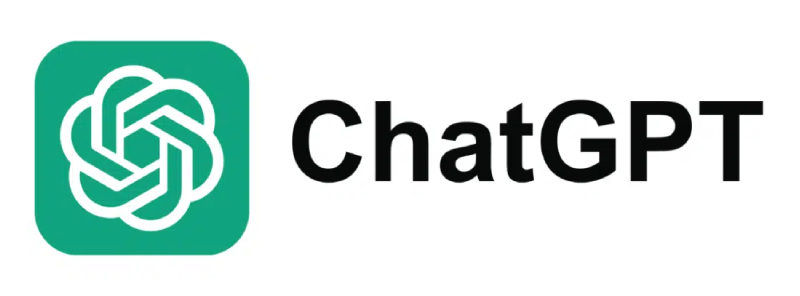Every few years, a new wave of technology promises to “reinvent” customer support. But few have shaken the industry quite like Generative AI. For support leaders in gaming, the pressure has never been higher. Players expect instant help, round-the-clock coverage, and human-like empathy, all at once.
The buzz around ChatGPT made it seem like all of that could finally be automated. Yet the reality inside most support teams looks different: dazzling demos that fail under live-service load, bots that improvise when unsure, and agents forced to clean up after the fallout.
Generative AI is a new layer in an ecosystem that still needs structure, governance, and context. In fact, the most forward-thinking studios are already discovering that success depends on how deeply AI is integrated into their in-game systems, not how “human” it sounds.
This article explores how studios can move past surface-level automation to build intelligent, reliable, and player-first support systems powered by Generative AI.
The Promise of Generative AI in Customer Support
Generative AI holds vast potential when it’s guided by structured data and practical workflows. Here’s what meaningful adoption looks like.
Faster response times with conversational AI

Speed remains the heartbeat of great player support. Generative models can instantly summarize tickets, suggest relevant solutions, and craft clear responses based on verified knowledge sources. Helpshift’s AI-Powered Answers uses retrieval-augmented generation (RAG) to ground every reply in approved game data, reducing both first-response time and cognitive load for agents.
Personalized player experiences at scale

AI can identify intent, past interactions, and language preferences to personalize every touchpoint. Helpshift’s Smart Intents routes tickets based on detected issue type and sentiment, ensuring a bug report doesn’t get the same flow as a payment dispute. The result: quicker resolutions, lower backlogs, and interactions that feel less like transactions and more like conversations.
Knowledge base generation and auto-summarization
Generative AI’s ability to summarize long threads or generate draft FAQ entries helps support teams keep their documentation fresh. Helpshift’s Issue Summaries condense player exchanges into concise insights, letting agents track recurring pain points and helping game teams patch faster.
Multilingual conversations without native agents
Language shouldn’t limit help. Around 48% of all player interactions now happen in non-English languages, and Helpshift’s Language AI ensures every one of those can be handled in real time with accurate translation.
This reduces wait times and ensures global parity in player experience, something only context-aware, natively integrated AI can achieve.
The Limitations of Relying on ChatGPT Alone
While generative AI opens new possibilities, ungoverned use can cause operational headaches. Here are the limitations studios face when they rely solely on generic LLMs:
Hallucinations and accuracy risks in support
Public models can improvise when unsure, producing misleading answers that frustrate players. Without domain constraints or grounding in your knowledge base, even small inaccuracies like refund instructions can lead to churn and reputational damage.
Lack of game-specific context or player data
Generic LLMs don’t know your in-game systems, currencies, or event timelines. They can’t pull transaction IDs or progress logs. Without integration with your CRM or back-end APIs, responses remain superficial, leaving real issues unresolved.
Escalation and compliance challenges
Support in gaming often touches sensitive data like payment details or underage accounts. Tools built for open text generation may fall short on audit trails, security certifications, and data-retention controls all of which Helpshift’s enterprise platform embeds by design.
The risk of treating AI as a “set and forget” tool
AI models degrade without tuning. Studios that deploy without continuous oversight risk misclassifying tickets or misidentifying player sentiment over time. Generative AI works best as part of a monitored, feedback-driven system that learns from real support outcomes.
Moving Beyond Hype: Practical Use Cases for Generative AI
Generative AI delivers value when tied to measurable workflows. Here’s how gaming studios are already applying it effectively:
Automating repetitive player queries with AI agents
Automating FAQs, account resets, and reward-claim issues can reduce overall ticket volume dramatically. In Helpshift’s benchmarks, automation now fully resolves 58% of all interactions, freeing agents to focus on complex issues.
Enhancing live agent productivity with AI-suggested replies
Generative AI can serve as an in-game copilot, suggesting contextually correct responses to agents. Helpshift’s Smart Compose adjusts tone, rephrases messages, and ensures consistency across conversations keeping the player experience uniform while maintaining agent speed.
AI-powered player feedback analysis for game improvements
Every ticket tells a story. By clustering feedback and summarizing sentiment, AI helps studios identify friction points in gameplay, monetization, or UI. These insights loop back into design, reducing future tickets while strengthening retention.
Intelligent routing based on sentiment and urgency
AI-powered routing minimizes bottlenecks by assigning tickets to the right agent based on complexity, mood, and SLA priority. Helpshift’s Smart Routing uses real-time sentiment analysis to flag urgent cases ensuring critical issues reach human agents fast.
Case Studies: Studios Using Generative AI the Right Way
Rovio
Rovio, the studio behind Angry Birds, partnered with Helpshift to streamline global player support. By adopting Helpshift’s in-app messaging and AI-driven workflows, Rovio automated nearly 70% of incoming tickets, cutting manual agent workload significantly. They also saw an 80% reduction in average response times, ensuring players could get help without leaving the game: a key reason behind their rising CSAT, which stabilized above 4.0
TrailMix
TrailMix, known for Love & Pies, used Helpshift’s AI and Automation suite to personalize every player interaction. With over 60% of tickets now handled through automation and CSAT averaging 4.3/5, their small team maintained premium-quality support without scaling headcount. Helpshift’s Agent Workspace gave them complete visibility across channels, while Messaging features helped reduce first-response times by nearly 50%
Kixeye
Kixeye, a multiplayer game developer, implemented Helpshift’s multilingual and AI-powered Help Center to support global player bases. Through a combination of automation and Smart Intents, they achieved a 75% ticket deflection rate, resolving most routine issues instantly. CSAT scores improved by over 20%, and overall Time to First Response dropped from hours to minutes, thanks to RAG-grounded answers and integrated escalation workflows
Best Practices for Implementing Generative AI in Support
Generative AI isn’t a silver bullet. Its success depends on thoughtful design, continuous learning, and collaboration between tools and teams.
Keep humans in the loop for escalations

Maintain a clear handoff path. When AI can’t handle edge cases like missing rewards or VIP-tier issues, agents should step in with full context. Helpshift’s unified dashboard ensures seamless transitions without forcing players to repeat themselves.
Train AI on game-specific knowledge, not just generic data
Feed the model curated FAQs, in-game event data, and historical tickets. This ensures accuracy and prevents misinformation. Helpshift’s RAG-based design already grounds responses in verified internal sources.
Track KPIs like CSAT, resolution time, and deflection rate
Measure both performance and perception. Helpshift’s benchmark data shows brands using AI achieve up to a 25% improvement in CSAT scores, linking faster response times with stronger loyalty.
Continuously update and monitor AI behavior
Monitor accuracy, sentiment shifts, and escalation rates. Regular audits keep generative systems aligned with brand tone and evolving player expectations.
Final Thoughts: Generative AI as a Partner, Not a Replacement
The most forward-thinking studios see Generative AI as an ally that strengthens every part of their support system. It streamlines repetitive tasks, surfaces context instantly, and helps teams respond faster while maintaining consistency and care. With the right setup, AI becomes the invisible layer that keeps experiences seamless and trust intact.
That’s exactly what Helpshift’s AI platform delivers. AI-Powered Answers, Smart Intents, Language AI, and Agent Copilot work together inside the game to provide multilingual, real-time assistance that feels natural and uninterrupted.
Generative AI is now the backbone of modern player support and Helpshift turns that promise into practice. Request a demo to see how in-game AI can elevate every interaction.








